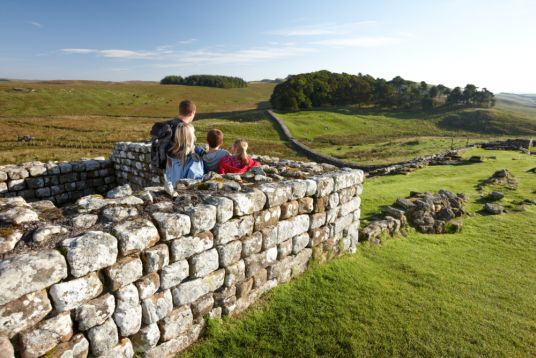

What is it, and how do I find my way around?
WORLD HERITAGE AND THE FRONTIERS OF THE ROMAN EMPIRE
World Heritage Sites are very special places that are described as having ‘outstanding universal value’; they are irreplaceable sources of inspiration and they belong to all of the peoples of the world.
The Sites are ‘inscribed’ on the World Heritage List by UNESCO (the United Nations Educational, Scientific and Cultural Organisation). There are now 1007 World Heritage Sites, worldwide; 28 of them are in the UK and its territories.
Hadrian’s Wall is a part of the frontier of a great empire that encompassed much of Europe, the Middle East, and North Africa. It is a symbol of a common heritage. The Wall was inscribed as a World Heritage Site (WHS) in 1987. It is now a component part of a much larger and more ambitious Site: the Frontiers of the Roman Empire (FRE). This is a ‘transnational’ Site: the result of the German Limes being added in 2005, and the Antonine Wall (between the Forth and the Clyde, in Scotland) in 2008.
However, these three only formed a small proportion of the frontiers of the Empire at its greatest extent, in the second century AD. The intention is that other stretches of the frontier (which lie in several further countries) will be gradually designated for their outstanding cultural value; this will make the Frontiers of the Roman Empire one of the largest World Heritage Sites of all.
The garrison of the Wall was a multi-cultural one, drawing on communities from across the Roman world. This history binds us all together, and so even these military remains can contribute to the UNESCO Manifesto 2000 for a Culture of Peace and Non-Violence that takes the culture of peace into daily life as an individual commitment and responsibility.
THE MANAGEMENT PLAN
Each World Heritage Site has to have a Management Plan that sets out why the place is special; what will be done to conserve and enhance it over a five-year period, and what will be done to explain its significance to visitors. This is the fourth edition of the Management Plan for the Hadrian’s Wall World Heritage Site. The others were produced in 1996 - the first such Plan in the UK - in 2002, and in 2008*
How do I find my way around?
The key document is the draft Statement of Outstanding Universal Value which describes, in a rather formal way, why the Frontiers of the Roman Empire have merited inclusion in the World Heritage List. Within this Statement, each component part of the World Heritage Site – In England, Germany, and Scotland – has a Contributory Statement that sets out the significance of the remains in a little more detail.
From these Statements a number of Attributes have been distilled. These simplify the language used and are designed to assist the assessment of any change to the Site that is proposed.
At the heart of the Plan is a series of Policies and Actions which have been agreed for 2015 to 2019. The Policies explain the intention of the Plan, in all of its various facets, and should help organisations which wish to determine their own policies in relation to the World Heritage Site. The Actions have been identified as priorities that can be reasonably expected to be achieved within current resources.
An overview of the progress of the Plan is maintained by a Partnership Board which is supported by a number of Delivery Groups.
*(The detailed background to the management of the Wall is set out in Managing, Using, and Interpreting Hadrian’s Wall as World Heritage, by P. Stone and D. Brough, published in 2014.)
